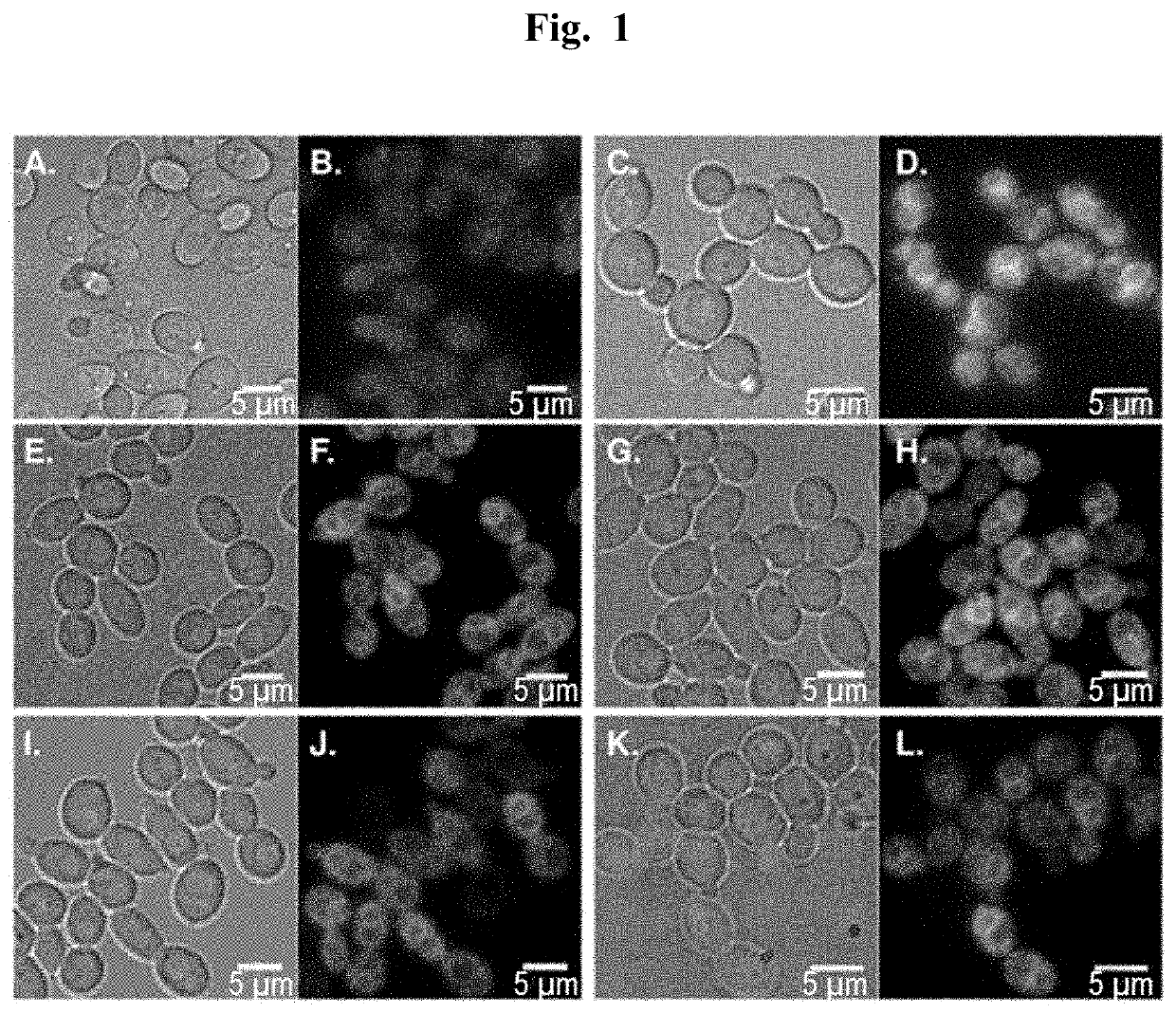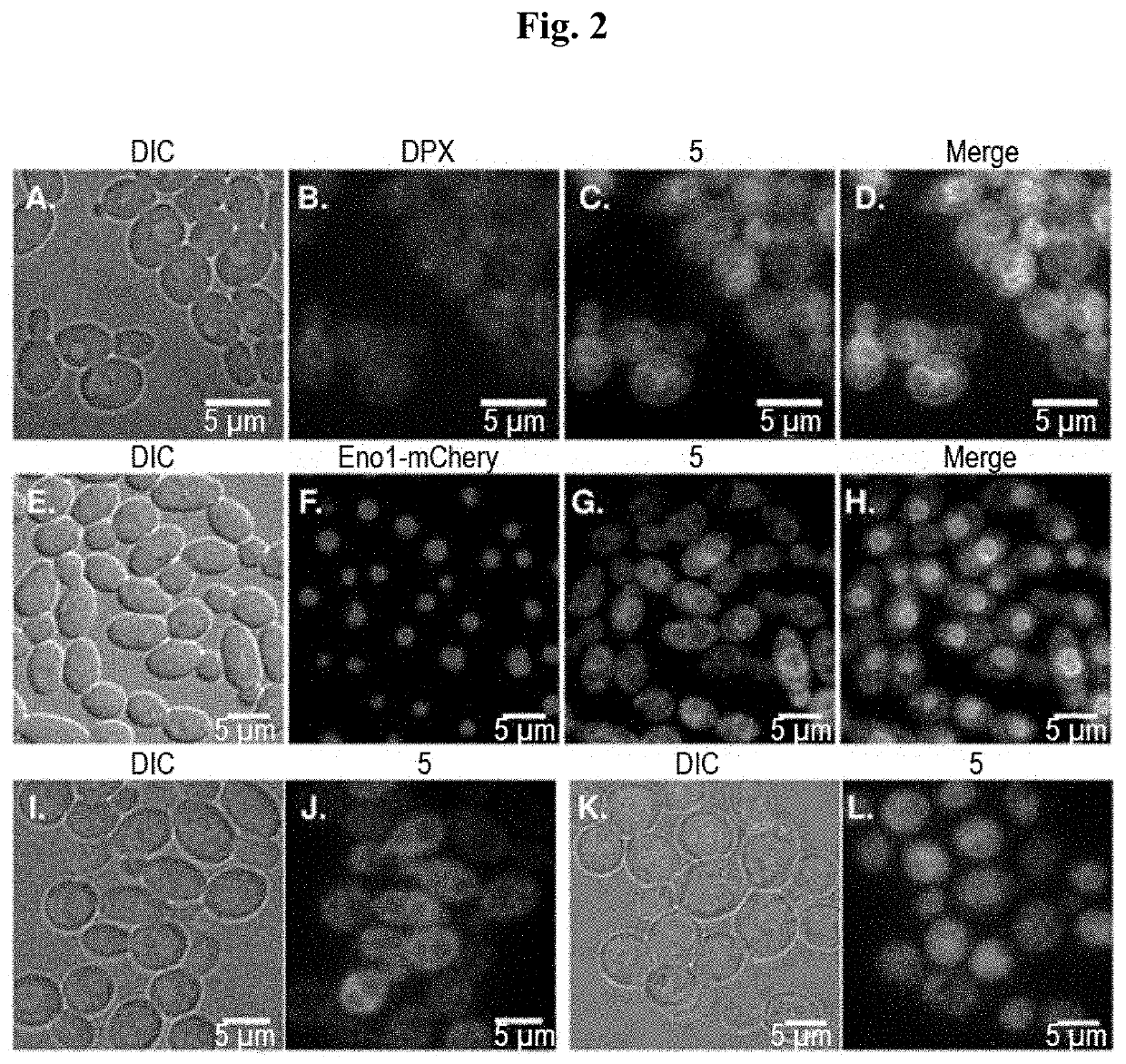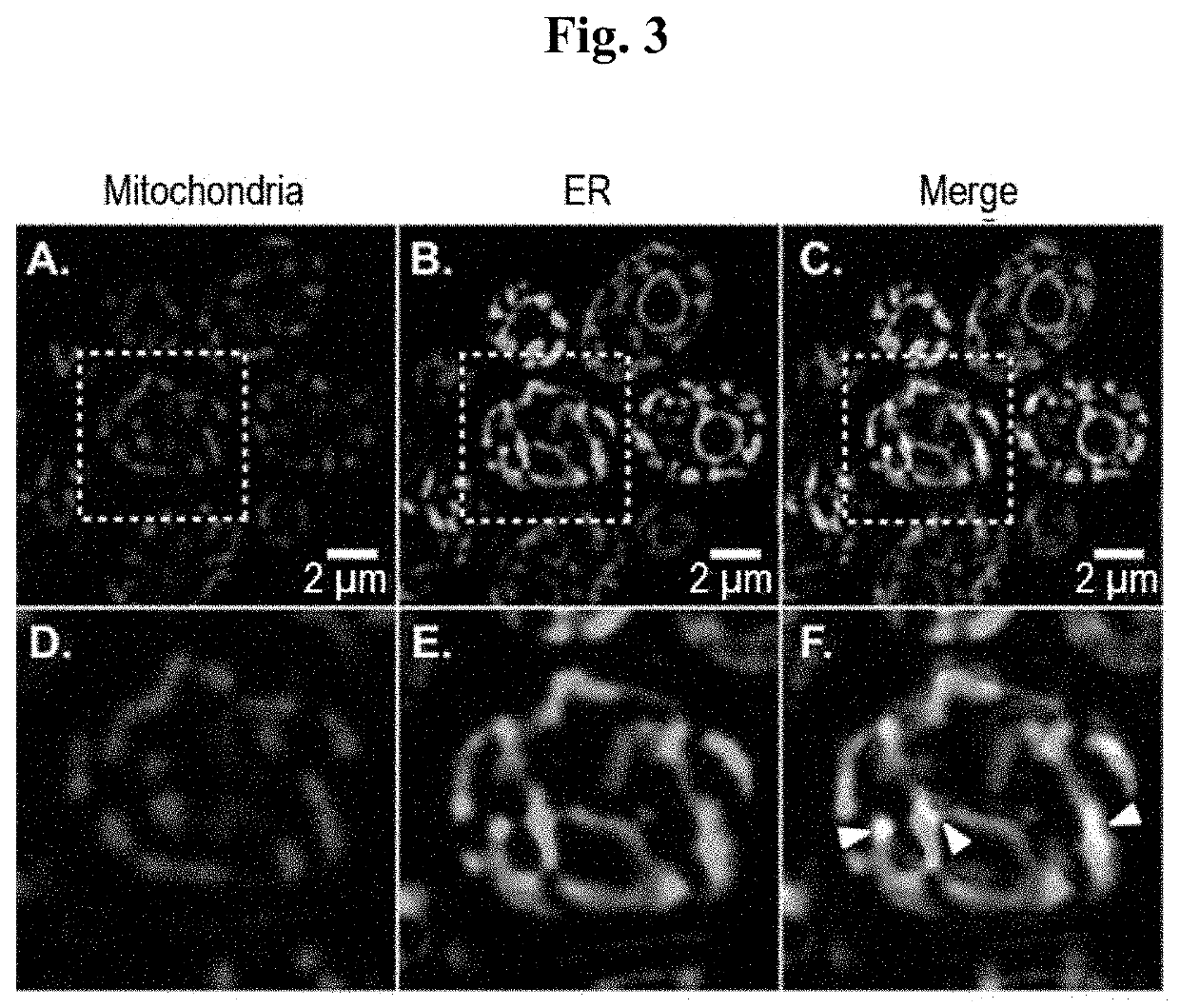Fluorescent endoplasmic reticulum trackers for live cell imaging of pathogenic yeast
a technology of endoplasmic reticulum and fluorescent probes, which is applied in the field of 3triazole and 1, 2triazolebased fluorescent probes, can solve the problems of high mortality rate, inability to optimally use pathogenic yeast er-specific trackers, and limited drug targets, so as to improve antifungal activity, reduce the growth of drug-tolerant fungal subpopulations, and improve the effect of antifungal activity
- Summary
- Abstract
- Description
- Claims
- Application Information
AI Technical Summary
Benefits of technology
Problems solved by technology
Method used
Image
Examples
example 1
Preparation of Azole Fluorescent Probes
[0077]Synthesis of the azole fluorescent probes was carried out by coupling of a fluorophore (7-diethylaminocoumarin or BODIPY) to an azole core (1,2,3-azole-2,4-dichloro synthon, 10, the corresponding difluoro compound, or the corresponding 1,2,4-azole-based compounds, as generally depicted in Scheme 3.
Synthesis of Probes 1 and 2
[0078]Probes 1 and 2 were synthesized following the procedure previously reported (Benhamou et al., 2018).
Synthesis of Probe 3
[0079]7-Diethylaminocoumarin-3-carboxylic acid (43 mg, 0.17 mmol) was dissolved in dry DMF (5 mL) under argon, treated with HATU (106 mg, 0.28 mmol) and triethylamine (0.08 mL, 0.56 mmol), then stirred for 10 min at 0° C. To the reaction mixture, 1-amino-2-(2,4-dichlorophenyl)-3-(1H-1,2,3-triazol-1-yl)propan-2-ol 10 (40 mg, 0.14 mmol) was added, and the solution was stirred at room temperature for 24 h. The reaction was monitored by TLC (petroleum ether / ethyl acetate, 3:7). Upon completion, the ...
example 2
Biological Activity of Probes 1-6
[0083]Using the pharmacophore of the 1,2,4-triazole based antifungal agents fluconazole and itraconazole, we designed and synthesized fluorescent probes 3-6 and evaluated their localization in a collection of pathogenic yeast cells. To be effective for use in living cells, a tracker must not affect cell viability at labeling concentration and during the time of the experiment. To reduce fungal cell toxicity, probes 2, 3, 5 and 6 were thus designed with a 1,2,3-triazole instead of a 1,2,4-triazole ring. In triazole-based antifungal azoles, the 1,2,4-triazole ring interacts with the iron atom in the heme of the target enzyme CYP51. As previously shown through density functional theory calculations, the electron density of the nitrogen atom in 1,2,4-triazoles that interacts with the heme iron is 33% higher than that of the corresponding nitrogen atom in 1,2,3-triazoles (Benhamou et al., 2018). We therefore reasoned that isosteric 1,2,3-triazole-based an...
PUM
| Property | Measurement | Unit |
|---|---|---|
| transparent | aaaaa | aaaaa |
| concentration | aaaaa | aaaaa |
| concentration | aaaaa | aaaaa |
Abstract
Description
Claims
Application Information
 Login to View More
Login to View More - R&D
- Intellectual Property
- Life Sciences
- Materials
- Tech Scout
- Unparalleled Data Quality
- Higher Quality Content
- 60% Fewer Hallucinations
Browse by: Latest US Patents, China's latest patents, Technical Efficacy Thesaurus, Application Domain, Technology Topic, Popular Technical Reports.
© 2025 PatSnap. All rights reserved.Legal|Privacy policy|Modern Slavery Act Transparency Statement|Sitemap|About US| Contact US: help@patsnap.com



